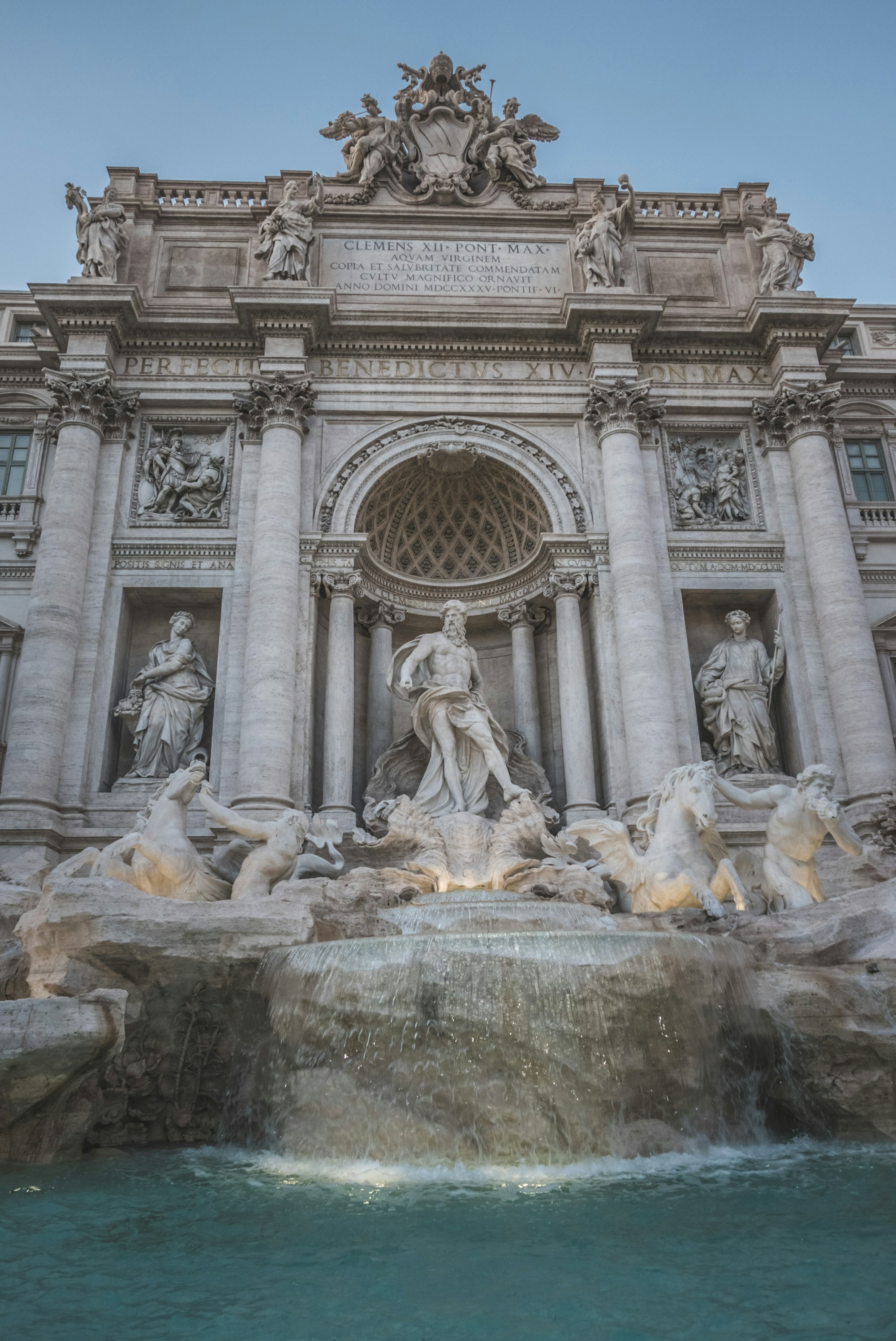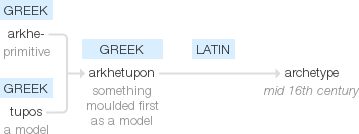Archetypes
Delving into the mind of Carl Jung and his jungian Archetypes. Pseudoscience or tip of the philosophical iceberg?

These past few days I've been trying to wrap my mind around the concepts of Jungian Archetypes. I was first introduced to the concept of Archetypes by the book, The King Within Accessing the King in the male psyche by Robert Moore and Douglas Gillette a couple of years ago. The first few chapters mentioned a male archetype within the female mind and the female archetype found in the male mind, both of which influence our innate expectations for the other. The Anima and the Animus. I didn't give it much thought until I start recognizing archetypes among others in real life. I noticed there were recurring personalities and thoughts among my friends and acquaintances. I also noticed a few shared opinions between myself and a few historically venerable men and women, even though I have not met them nor have we shared any common background or experience. Some are often separated from me by thousands of years such as Plato, Seneca, Marcus Aurelius, Cicero, Epictetus, Epicurus, Homer, Socrates, Hippocrates, Pythagoras, etc. (I actually don't mind beans though, unlike Pythagoras).
The question then that came to my mind was, what connects us? To answer this, the need to explore archetypes seems warranted.
What is an Archetype

To best grasp the concept of Archetypes, it's probably best to ask the question of what happens when there are no archetypes.
Is a new born baby a completely "blank slate" or is there some already some degree of preformed psychic structure?
How does a baby eventually learn to recognize and behave accordingly to the presence of its mother despite having no formal education within its first few months? Or to be more specific, why is a baby able to recognize its maternal figure among various people. After all, in pediatrics, an infantile social/behavioral milestone at 6 weeks old is to smile at his/her mother/familiar faces.
In my reading, I've realized this is a very common question among psychologists and philosophers. Carl Gustav Jung, a German psychiatrist who developed the school of analytical or depth psychology, seemed to offer an explanation which he borrows inspiration from:
- Immanuel Kant's Categories
- Plato's Ideas
- Arthur Schopenhauer's Prototypes
and eventually called his attempt at an answer, Archetypes.
But what is an archetype?
Introduction
"There exists identical psychic structures common to all, which are heritable and influence the way all humans the world" - C. Jung
Carl Jung was one of the foremost experts not only as a practicing psychiatrist but as a religious and mythical symbolist. In exploring both these fields, he was able to uncover his theory of archetypes. Jung noticed that religions both in the past and present share very specific and similar themes, symbols, and patterns. But what stood out was how these symbols related to the dreams of his patients suffering from Schizophrenia. What would account for these similarities though separated from each other by climate, culture, epoch, ethnicity, geography, etc?
Jung proposed that the human mind is not the sole product of personal experience, but it contains elements in the psyche that are pre-personal and exists before a human becomes conscious. These elements are common to all and are called Archetypes.
He defined the human psyche as encompassing all aspects of the person, which is built up by the:
- Conscious
- Pre-conscious (Personal Unconscious)
- Collective Unconscious
These various "depths" are not closed off from another but constantly interact with the functional individual.
Consciousness
This level is defined as the individual's field of awareness and consists of the psychic contents that one has knowledge of. This means that experiences of the individual which one is aware of will take on the form of consciousness. This area is quite important as every conscious thought is credited to the world being shaped the way it is today. However, according to Jung, the conscious realm is dwarfed in comparison to the Unconscious Realm.
The Unconscious
This, in contrast to the conscious realm, is defined as containing those psychic contents that one is unaware of and is divided into:
- Personal Unconscious
- Collective Unconscious
Personal Unconscious
This is part of the unconscious that is specific to the individual and contains psychic contents which are specific to one's personal experience. It contains elements which are forgotten, insignificant or repressed (eg. repressed memories). Below this, however, is a much deeper realm called the collective unconscious.
Collective Unconscious
This area consists of psychic structures or cognitive categories which are NOT unique to individual but are shared by all. These structures hold elements that influence our thoughts/opinions and behaviors. The realm of the Archetypes.
From the unconscious there emanate determining influences... which, independently of tradition, guarantee in every single individual a similarity and even a sameness of experience, and also of the way it is represented imaginatively.
-C. Jung
Eric Neumann (Jung's Student) used a useful analogy to explain this complex idea. He described the archetypes as mental viscera (organs) of the brain. Just as the body is formed by organs largely formed prior to birth, so the mind possesses psychic organs which structure it; the Archetypes.
Also just as the physical organs operate without the individual's conscious input, so do the archetypes.
The archetypal structural elements of the psyche are the psychic organs upon whose functioning, the well-being of the individual depends, and whose injury has disastrous consequences.
-Erich Neumann
Though it's important to note that although we can observe the structure and function of the physical organs, we cannot for the archetypes. The existence of archetypes is revealed by the arrangements they produce in consciousness; through the manifestation of symbolic imagery.
Symbolism
A sign is a token of meaning that stands for a known entity. By this definition, language is a system of signs, not symbols.
A symbol on the other hand is an image or representation which points to something essentially unknown, a mystery. A sign communicates abstract, objective meaning whereas a symbol conveys living, subjective meaning.
-Edward Edinger, Ego and Archetypes.
When we speak of symbols, we speak of things that are not in the physical world.
Whenever we speak of [symbolic] contents we move into a world of images that point to something ineffable. We do not know how clear or unclear these images, metaphors and concepts are in respect of their transcendental object... [However] there is no doubt that there is something behind these images that transcends consciousness and operates in such a way that the statements do not vary limitlessly and chaotically, but clearly all relate to a few basic principles or archetypes.
-C. Jung
Though its important to note that the archetypes provide the structure for the symbol, not the specific form, and therefore may have variances between cultures and individuals, though it does not vary "limitlessly and chaotically".
The relationship of the symbol to the archetype is that the symbols revolve around a central archetype and consciousness, therefore, is a collection of such orbits.
The form of representation peculiar to the unconscious is not that of the conscious mind. It neither attempts nor is able to seize hold of and define its objects in a series of discursive explanations, and reduce them to clarity by logical analysis. The way of the unconscious is different. Symbols gather round the thing to be explained, understood, interpreted. The act of becoming conscious consists in the concentric groupings of symbols around the object, all circumscribing and describing the unknown from many sides. Each symbol lays bare another essential side of the object to be grasped, points to another facet of meaning. Only the canon of these symbols congregating about the center in question, the coherent symbol group, can lead to an understanding of what the symbols point to and of what they are trying to express.
The Origins and History of Consciousness, Erich Neumann
The influence of the archetypes on human thought and behavior results in the similarities in the varied myths and religions. Archetypes only acquire solidity, influence, and eventual consciousness in the encounter with empirical facts. The archetypes form a complex and changing foundation upon which each person will construct their individuality and experience of life. Therefore while archetypes may be thought of as a few core functions, their derivatives (symbols, patterns of behavior, images) are infinite. They are therefore a set of elemental structures which simply direct the images and forms to be constructed and apprehended consciously.
They seek to be manifested within the context of the person's environment and experience, and will eventually determine the degree of individualization, a process described as actualization. Wikipedia used an example of actualization by describing how a child has an actualized image of their mother in his/her mind already and therefore the child is evoking innate anticipations of the maternal archetype when near the mother or near an individual that corresponds to the child's maternal archetype image. However, this specific mother is unique to the individual child and therefore cannot exist in the collective unconscious. It exists in the layer above, the personal unconscious, as a function called a "complex". This differs from the archetype by its specificity.
Difference between Archetype and Instinct
One would then ask what is the difference between an archetype and an instinct. I wondered this myself but Jung also had an explanation. He argued that Archetypes and Instincts are two faces of the same coin.
Dr. Bren Hudson (Ph.D.) reports that "Jung considered the instincts to be an ectopsychic factor similar to archetypes. For Jung instincts form structures and patterns of human behavior, whereas archetypes form images in the mind. Both instincts and archetypes are ectopsychic factors. The instincts drive the development of the ego. The task of the second half of life is for the ego to become aware of its origins in the self. All of the Jungian Psychology can be summed up in its aim of bringing the ego into a dialectical relationship with the self, the below and the above in a co-creating relationship."
Conclusion
Archetypes are fascinating and put into perspective why we as a species are the way we are, why we think the way we think, and why we act the way we act.
It also gives an explanation of what we observe when things go wrong such as in Schizophrenia. The archetypal imagery manifested in mental illness is near identical to popular doctrines in terms of symbolism, imagery, and thought content albeit usually exaggerated.
However, given the limited ability to test such a theory, many have called this concept 'Pseudoscience' which appeals to those desperate for an explanation into deeper consciousness.
- Gib
